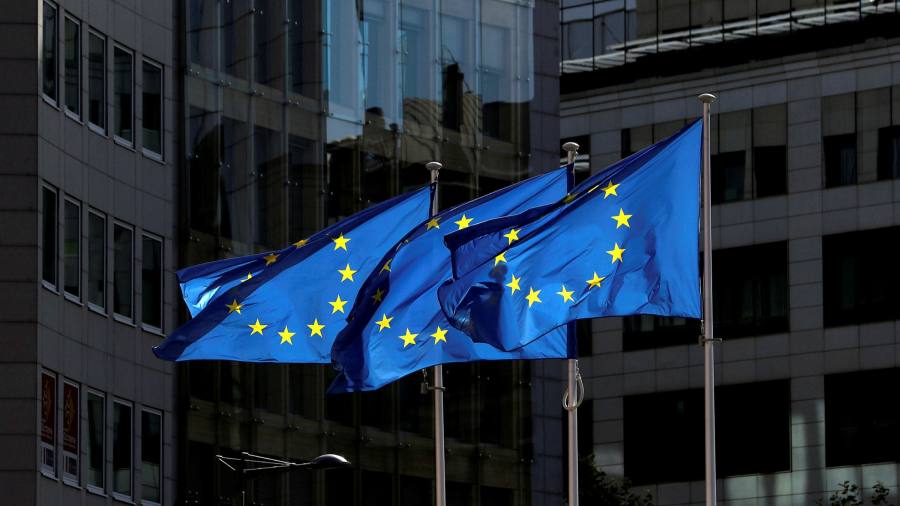[ad_1]
The European Commission said there was “light at the end of the tunnel†for the eurozone economy as it forecast that output would return to its pre-pandemic level earlier than previously expected, citing the bloc’s vaccine rollout for the improving outlook.
The euro area economy will grow by 3.8 per cent this year, and at the same pace next year, Brussels forecast in a report published on Thursday.
While the forecast for this year is lower than Brussels’ previous projection, which was published late last year, its 2022 prediction is stronger. That reflects the impact of widening vaccination coverage and easing lockdowns, the commission said.
As a result, output should reach its pre-pandemic level by the middle of next year — sooner than Brussels’ previous forecast, which projected that the recovery would not be complete until 2023.
“As increasing numbers are vaccinated over the coming months, an easing of containment measures should allow for a strengthening rebound over the spring and summer,†said Paolo Gentiloni, the EU’s economics commissioner.

The eurozone economy shrank by a record-breaking 6.8 per cent last year, and growth in the early months of 2021 is likely to be sluggish because of continued shutdowns and the limited pace of the vaccine rollout. The EU administered vaccines at a rate of 3 doses per 100 people in early February, “with large cross-country differencesâ€, the commission said.
Spain and France are expected to notch up the fastest growth this year, at 5.6 per cent and 5.5 per cent respectively, after they suffered steep losses in output last year.
At the other end of the scale, the Netherlands’ economy is predicted to expand by 1.8 per cent, but that follows a much shallower contraction at the height of the pandemic.
The forecast assumed that supportive monetary and fiscal policies would remain in place during lockdowns and Brussels warned that “a premature withdrawal of such support measures remains an important downside riskâ€.
The EU’s €750bn recovery fund, which is set to start paying out this summer, is expected to help boost the recovery. The European Parliament approved the Recovery and Resilience Facility, which forms the core of the plan, this week.
The easing of lockdown measures could trigger an upside surprise to growth, the commission added. “A burst of post-crisis optimism . . . would unleash stronger pent-up demand and innovative investment projects, thanks to historically high household savings, low financing costs and supportive policies,†it said.
However, “on the negative side, the pandemic could prove more persistent or turn out more severe in the near term, pushing back the expected recoveryâ€, the forecast acknowledged. It highlighted the risk of “deeper scars in the fabric of the European economy and society†as a result of the protracted crisis, driven by bankruptcies, long-term unemployment, and higher social inequality.
The forecasts underscore the critical importance policymakers have placed on stepping up the rate of vaccination. The EU lags behind other major economies, including the US and UK. Commission president Ursula von der Leyen has come under fire as the bloc struggles to bolster vaccine supplies, and in the European Parliament on Wednesday she acknowledged mistakes in the EU’s approach.
Valdis Dombrovskis, executive vice-president at the commission, said a “strong European response†remained vital to tackling the broader impact of the crisis, including job losses, a weakened corporate sector and rising inequalities. “We will still have a great deal to do to contain the wider socio-economic fallout.â€
[ad_2]





